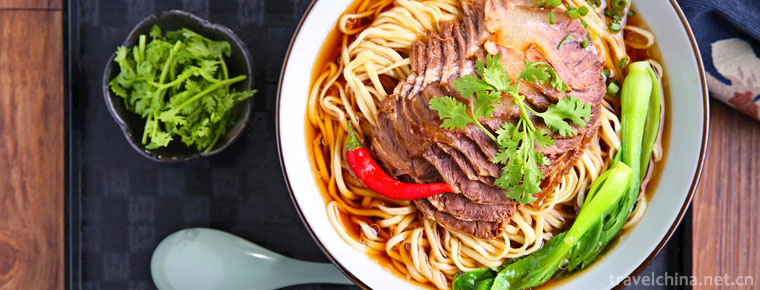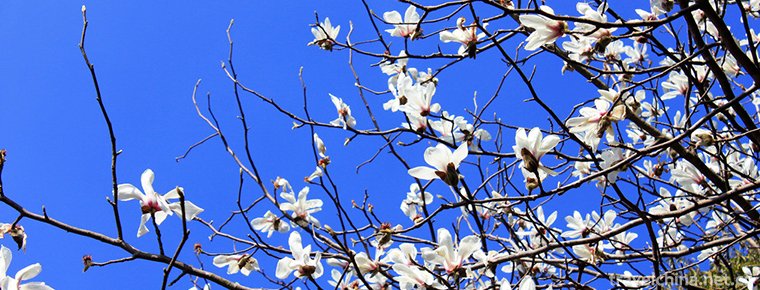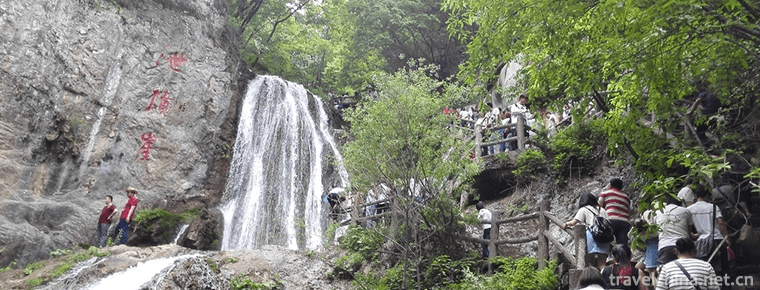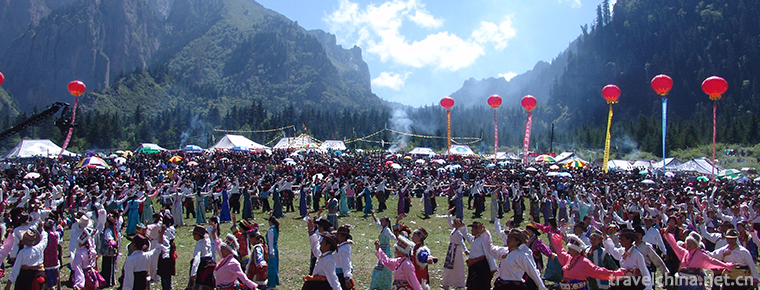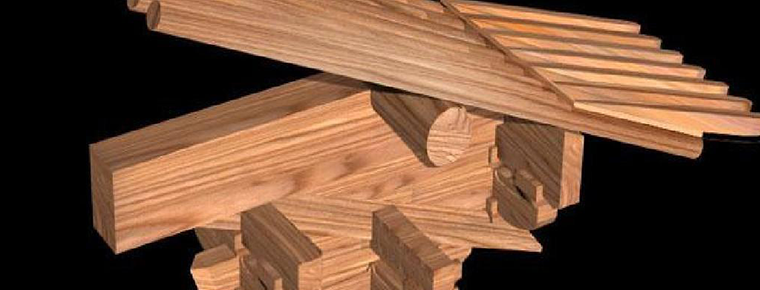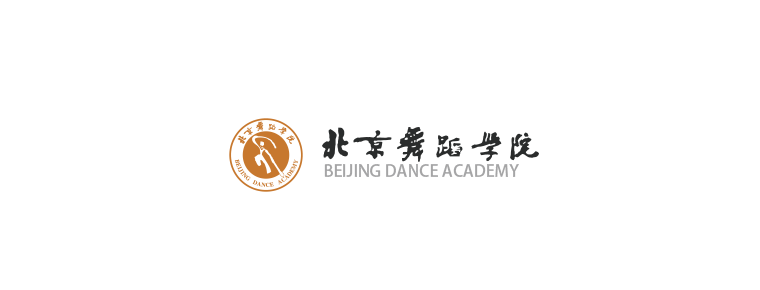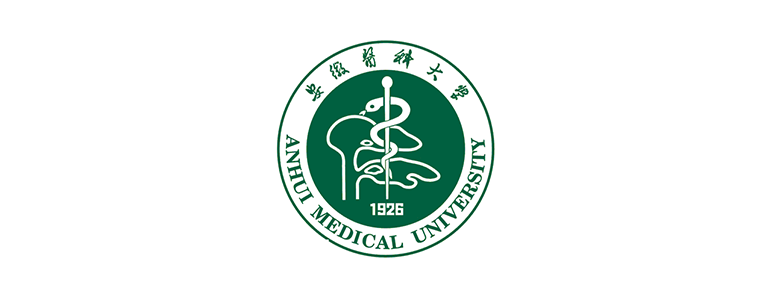opera sung in southern tunes
opera sung in southern tunes
Southern Opera is the earliest mature type of drama in the history of Chinese opera. From the end of Northern Song Dynasty to the beginning of Ming Dynasty (12th to 14th centuries), Southern Opera was popular in Southern China. It was called Southern Opera, Wenzhou Southern Opera or Drama by later generations.
On June 7, 2008, "Nanqu" declared by Wufeng Tujia Autonomous County of Hubei Province was listed in the second batch of national intangible cultural heritage list with the approval of the State Council. Heritage serial number: 764 V-71.
historical origin
In the Song and Yuan Dynasties, the Southern (south of the Yangtze River, centered on Wenzhou and Yongjia) operas and Sanqu were collectively referred to as all kinds of tunes. The rhyme was based on the Southern (Jiangsu and Zhejiang) pronunciation, and there were four tones going up flat. Musically, it is composed of five scales, soft and melodious tones, accompanied by flutes and other stringed instruments, such as zither and pipa, in the early Ming Dynasty. Southern Opera in Song, Yuan and Ming and Qing Dynasties are dominated by Southern Opera. Compared with the Northern Opera, which originated mostly from Tang and Song Daqu, Song Ci, Zhugong Melody and Northern Folk Melody, and absorbed the music of Jin and Yuan brothers.
Art Crystallization of the Blending and Development of Tu-Han Culture: Changyang Nanqu
Changyang Nanqu is one of the oldest local songs in Hubei Province. It has been called Nanqu (also known as Silk String) since ancient times. In 1962, it was designated as the current name, mainly circulated in Changyang and Wufeng Tujia Autonomous Counties, with Ziqiu as the most prosperous. With its strong national and folk characteristics and distinctive local style, it enjoys a high reputation in the music circle and is known as "the Fragrant Mountain flowers".
According to the spread of Changyang Southern Opera in the past dynasties, such as Qupai and Qushi, it was produced and developed on the basis of the Ming and Qing Dynasty folk songs, the general source of the whole song singing art in China. It was first introduced into the Tujia area at the time of Yongqian in the Qing Dynasty. It was an artistic variety introduced before and after the "reform of the land and return to the native land". It has a history of more than 200 years. Changyang Nanqu has never been a professional artist. It has been handed down from the folk, taught by close friends, or inherited from father to son from generation to generation. Tujia Southern Opera artists are the main force to inherit and develop the art of Southern Opera. A kind of music can take root in Tujia Mountain Village for two hundred years, which is not common in Hubei local music, or even in more than 300 kinds of music in the whole country. Up to now, people in Tujia mountain villages often invite people to gather during the holidays, get married daughters-in-law, birthday celebrations and spare time of work. You play him singing, clap the national tune, sing for yourself and entertain others. Changyang Ziqiu, known as the "Township of Nanqu", is quiet every night, but it can hear the three strings of the hanging feet upstairs thundering and the music lingering. It is refreshing to face the mountain night.
Changyang Nanqu is a kind of elegant art of playing and singing. It is often sung in wedding and longevity occasions. The main form of performance is sitting and singing, mostly for one person to play and sing, but also for many people to play and sing or one person to play, one person to play concise board while singing, according to the content of the repertoire can also sing to each other. In the traditional repertoire, there are few lines and no action performances. Changyang Nanqu is beautiful, lyrical and melodious. Its music has the characteristics of rigidity, softness and narrative. It belongs to the tune of Qupai. The whole tune is divided into two major tune systems, namely "Nanqu" and "North Diao". There are 31 cards in the Nanqu tune system, among which , , [Lower and Lower Sentences], are the masterpieces of Nanqu; in the "North Diao" tune system, there are only one cards . The main melody of Nanqu is tri-stringed. When they sing, they play rhythm with simple board.
In the content of the repertoire, Changyang Southern Opera has some common themes which are popular all over the country, such as the chapters of the novel and the script Romance of the Three Kingdoms, Water Margin and the Romance of the West Chamber, etc. It also has some special themes which express the Tujia national customs, such as "Fat Madame Crossing the River" and "Mantis Seeking Friends". In terms of music, although there are some general tunes such as "Acacia of the Four Seasons", "Yanyan Diao", "Chuijin Fan", "Snowflake Gone", "Fengyang Diao" and "Duplicated Bridge" in the whole province and even in the whole country, through long-term circulation and singing, the melody decoration characteristics, the embellishment of singing, accompaniment and so on, all show that they have become "Nanqu" and "Nanqu". It's localized.
Most of the traditional songs in Changyang Nanqu are short stories, but no mid-length or long stories have been found. Generally speaking, the lyrics are about 50 sentences. Generally speaking, the lyrics are more elegant. With the use of metaphor, antithesis, parallelism, personification, exaggeration and other rhetorical devices, many popular excellent words have been left behind. Such as "Jincheng Ma Sifang grassland, Yulou people drunk apricot blossom sky", "Yanzhi mountain pile of silver powder, hanging jade bars in front of the Yellow Crane Tower", "idle slate knocking the moon, drunk fishermen singing sunset" and so on.
Although Nanqu is not native, it is gradually "naturalized" due to the introduction of Tujia Shanzhai to settle down and spread for generations. It is the artistic crystallization of the blending of Tujia and Han cultures.
Nanqu is a local ditty popular in Wufeng and Changyang. In Changyang, it is called "Changyang Nanqu". In Wufeng, people are still accustomed to using the traditional folk appellation and still call it "Nanqu".
Experts have proved that this ancient song has existed in Wufeng and Changyang for more than 200 years, mainly on the basis of artistic monuments and material evidence. In 1982, Zhang Hongao, an old Fujiayan artist, attended the Wufeng Nanqu Artist Symposium, and preserved a small three-string handed down by his father, Zhang Kaishu, who had a history of more than 180 years at that time. At the meeting, it was also found that the Southern Quben scripture, which had been used for more than 100 years, had been handed down by several generations. The discoveries of these things coincide with the expert's arguments.
Current situation of inheritance
Nanqu is popular in most areas of Wufeng. The original 16 townships are distributed in 11 townships except the county seat, flower picking, Niuzhuang, Houhe and Wantan. Among them, Yuyangguan, Haoping, Changle Ping, Bailuzhuang, Xiejiaping, Hongyuping, Shuihusi and Fujiayan are the main epidemic areas, which are prevalent for a while. Shengziping, Renheping and Qingshuiwan also distribute in three towns, where Jane, Xu, Yang, Zhang and other surnames have learned to sing Nanqu. Ren Heping's simplicity often attends concerts in Yuyangguan, Haoping and Changle Ping, and sings with famous Southern Opera artists Du Haiqing and Xiang Zaizi.
Li Lianquan, a veteran artist in Yuyangguan, recalled that some people in Jingzhou, Shashi, had sung Nanqu before. In the early 1940s, Li went to Jingsha to do business. He once heard Chen Guchai Pan sung in a storehouse in Honghu. They became friends and talked with each other. When Li returned to Yuyangguan, he also bought a pair of middle and third strings from Shashi.
Inheritance and Protection
Census Collection
The collection of Wufeng began in the mid-1950s. In early November 1956, the Cultural Museum held the first Congress of folk artists of all art categories in the county. The participants included 12 representatives of Tang Opera, Shadow Show, Nanqu Opera, Han Opera and folk art. The contents of the conference include policy implementation and learning, artists registration, performance status, drama statistics, investigation of program content, data collection, etc. Since 1957, on the basis of extensive rural cultural activities and performances, the annual Spring Festival folk art performances have been organized. At that time, Nanqu artists such as Xie Jiaping's Sancai (Cai Honggao, Cai Fugao, Cai Degao), Chen Wen of Hongyuping, Hu Secondary of Haoping, the simplicity of Yuyangguan's Xiezi, Renheping and so on were the backbone of local amateur cultural activities and performances.
In November 1962, the Cultural Museum held the second Folk Artists'Meeting, at which eight articles on learning literature and art were carried out, and folk materials were excavated and sorted out. Artists were encouraged to teach apprenticeship, and artists with difficulties in life were subsidized. The excavation and collation work lasted until 1964, but the cultural museum failed to centralize and properly preserve these precious materials due to the change of personnel and the successive movement.
From the 1960s to the late 1970s, the creators of the troupe used the opportunity of going to the countryside for exercise and touring performances to collect sporadic materials of Nanqu. However, there are many limitations, such as Du Haiqing, Chen Wen and others in Chaibuxi and Hongyuping. The purpose is not clear, just learning to sing and looking for creative materials. Although the later works such as "Bear and Bear Jumping in the Sea", "He Long San Jin Yu Yang Guan" and "Zhou Chu Chang" were written based on these materials, no valuable original materials were left.
In 1980, the county began to collect folk songs on a large scale. At the same time, a census of Nanqu was conducted in the county through cultural centers. In 1981, the key local cultural bureaus organized special classes for verification. At the end of March 1982, a symposium of Nanqu artists was held in the whole county. More than 10 veteran artists with an average age of 72 years attended the symposium. A total of more than 20 music cards and more than 30 traditional passages were included. It should be said that Wufeng's collection of Nanqu began not too late, but things were not finished. When it was done again in the early 1980s, it was already three autumns, and most of the artists died one after another, leaving a lot of regret.
representative figure
According to the statistics of 1956, there are more than 10 artists with high attainments who can play and sing dozens of paragraphs by themselves, all of whom are nearly 100. There are three representative artists:
Yang Zhibai (1900-1968): A farmer in Gangou Village, Changle Ping, who has studied in private schools for many years, has a high literary and musical accomplishment and can sing dozens of paragraphs. According to Du Haiqing and others, "Catching Pan" is Yang Zhibai's tune (compilation). He is the only Southern Opera artist in Wufeng who can compose music.
Hu Secondsheng (1905-1980): Haoping Huotian pit farmer, who has read private school for seven years, when he was 20 years old, he Baizhu Heqing (Haoping people, unknown age of birth and death) learned to sing Nanqu for his teacher. He also learned to sing Shadow Lajinghu, and also could sing dozens of passages. Hu's second tri-stringed and Beijing-Hu are well-trained. He has performed tri-stringed and Beijing-Hu solos on the local and county stage. He is the artist with the highest level of musical instrument performance.
Du Haiqing: Born in 1903, a farmer in Chaibuxi, Changle Ping, four years of private school culture. At the age of 17, Su Boan (Bailuzhuang, born and died unknown) was a teacher. Later, he taught and learned with Yang Zhibai, Peng Jiyao (Changle Ping), Wu Yuanqing (Changle Ping) and other people, and his skills were maturing. After learning, I will sing everywhere and perform independently. He has sung halls in Yuyangguan, Renheping, Fujiayan, Hongyuping and the adjacent county Changyang. Du Haiqing is good at both playing and singing. She can sing dozens of paragraphs and tunes by herself, especially those of "Sao Song" and "Chai Pan". His singing is exquisite, graceful and smooth, with strong artistic appeal. Since the late 1950s, many batches of literary and artistic workers from provinces, prefectures and counties have been invited to collect their works. They have provided important pieces and repertoires for Changyang Nanqu. In the early 1980s, he was appraised as the first batch of outstanding folk artists by the county cultural bureau. He is the most representative of the Southern Opera artists.
In addition to the above three persons, there are more than 10 artists such as Tian Kejia, Zhang Hongao, Yan Huanqing (Hanyang people, later moved to Yuyangguan), Zhang Chaomei (women, Haoping people) and so on.
Tian Kejia: Born in June 1922, a farmer in Erdunyan, Shuihusi, Master Tian Shanfu (Shuihusi, born and died in unknown years), 10 years of private school culture. He can sing several pieces of music such as "Talented Scholars Traveling the River", "Three Kingdoms Heroes", "Spring to Summer", "Sigh to Yourself" and "Parasitic".
Zhang Hongao: Born in 1910, a farmer in Fujiayan Township. He studied private culture for 12 years. At the age of 17, he learned to sing Nanqu with his father Zhang Kaishu. She can sing more than 10 traditional passages such as Catching up with Pan, Sweeping Song, Four Evils Dealing with the Aged, He Xin Marriage, Spring to Summer, Fishing and Woodcutting Cultivation Reading, etc., which have certain artistic attainments.

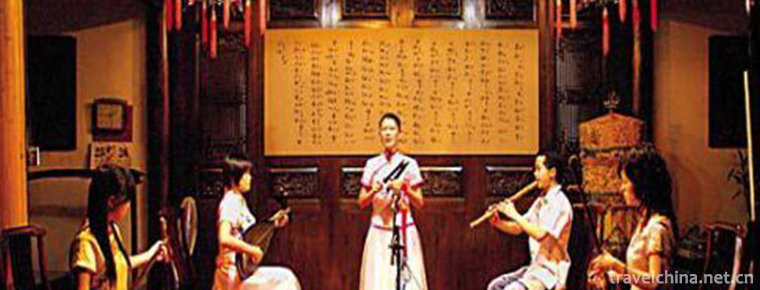
-
Beef noodle
Beef noodle is a common pasta. It is also a traditional food in Lanzhou.
Views: 287 Time 2018-10-12 -
Baiyang Lake
Baiyang Lake/Anxin Baiyangdian Scenic Area is located in the central part of Hebei Province. Anxin Baiyangdian is the largest inland lake in Hebei Province.
Views: 322 Time 2018-11-24 -
Wucai Beach
The Wucai Beach is located in Buerjin County, Altay area, north end of Xinjiang. It is located on the first and second terraces on the North Bank of Ertiz River, the only one injected into the Arctic .
Views: 101 Time 2018-12-22 -
Haitangshan Scenic Area
Haitangshan Mountain is one of the top ten scenic spots in AAAAAA, National Forest Park, National Nature Reserve, Provincial Key Cultural Relics Protection Unit and Province.
Views: 147 Time 2019-01-13 -
Chongdugou Scenic Area
Zhongdugou Scenic Area, located in Luanchuan County, Luoyang City, Henan Province, was given the name of emperor because Liu Xiu, Emperor Guangwu of the Eastern Han Dynasty.
Views: 201 Time 2019-03-18 -
Pot dance
Guozhuang dance, also known as "Guozhuo", "Gezhuang", "Zhuo" and so on, is one of the three major Tibetan folk dances. Guozhuang Dance is distributed in Changdu and Naqu .
Views: 132 Time 2019-05-02 -
Construction Techniques of Luling Traditional Dwellings
The traditional wooden structure construction technique is an ancient traditional handicraft of the Han nationality. The traditional architecture of the Han nationality is a building system with woode.
Views: 271 Time 2019-05-15 -
Mongolian Boke
Boke is one of Mongolian traditional sports and recreational activities. People on the grassland call Mongolian wrestling "Boke" (strong, united and lasting meaning of Mongolian). It is the .
Views: 108 Time 2019-06-03 -
The technical skill of penjing
Bonsai art refers to the Soviet bonsai art, which originated in the Tang Dynasty, flourished in the Ming Dynasty, matured in the Qing Dynasty, and developed in modern times. Since the 1980s, Suzhou Bo.
Views: 236 Time 2019-06-09 -
Tie dyeing skills
Tie-dyeing, known as Zha Val, Ge Val, Jia Val and Dye Val in ancient times, is a traditional and unique dyeing process of Chinese folk. A dyeing method in which fabrics are partially tied up so that t.
Views: 142 Time 2019-07-16 -
Beijing Dancing Academy
Beijing Dance Academy is a full-time ordinary college with the main task of training high-quality dance talents, high-level dance theory research and creation of works. The school, formerly Beijing Da.
Views: 296 Time 2019-09-06 -
Anhui Medical University
Medical University Of Anhui (Anhui Medical University), referred to as "an Medical University", located in the capital of Anhui. Hefei City Yes. Key universities in Anhui By Anhui Provincial.
Views: 102 Time 2019-10-10
